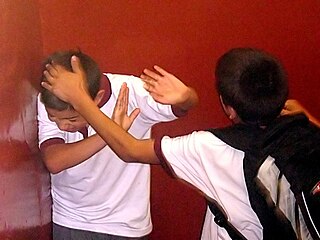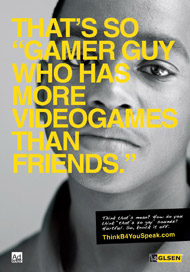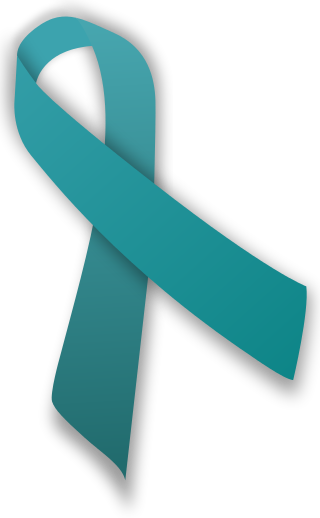
Transphobia consists of negative attitudes, feelings, or actions towards transgender people or transness in general. Transphobia can include fear, aversion, hatred, violence or anger towards people who do not conform to social gender roles. Transphobia is a type of prejudice and discrimination, similar to racism, sexism, or ableism, and it is closely associated with homophobia. People of color who are transgender experience discrimination above and beyond that which can be explained as a simple combination of transphobia and racism.
Gay bashing is an attack, abuse, or assault committed against a person who is perceived by the aggressor to be gay, lesbian, bisexual, transgender or queer (LGBTQ+). It includes both violence against LGBT people and LGBT bullying. The term covers violence against and bullying of people who are LGBT, as well as non-LGBT people whom the attacker perceives to be LGBT.
Sexual harassment in education in the United States is an unwelcome behavior of a sexual nature that interferes with an American student's ability to learn, study, work or participate in school activities. It is common in middle and high schools in the United States. Sexual or gender harassment is a form of discrimination under Title IX of the Education Amendments of 1972. Sexual harassment involves a range of behavior from mild annoyances to unwanted touching and, in extreme cases, rape or other sexual assault.

School bullying, like bullying outside the school context, refers to one or more perpetrators who have greater physical strength or more social power than their victim and who repeatedly act aggressively toward their victim. Bullying can be verbal or physical. Bullying, with its ongoing character, is distinct from one-off types of peer conflict. Different types of school bullying include ongoing physical, emotional, and/or verbal aggression. Cyberbullying and sexual bullying are also types of bullying. Bullying even exists in higher education. There are warning signs that suggest that a child is being bullied, a child is acting as a bully, or a child has witnessed bullying at school.
Youth suicide is when a young person, generally categorized as someone below the legal age of majority, deliberately ends their own life. Rates of youth suicide and attempted youth suicide in Western societies and other countries are high. Amoung youth, attempting suicide is more common among girls; however, boys are more likely to actually perform suicide. Among youth, the rate of suicide nearly tripled between the 1960s and 1980s. For example, in Australia suicide is second only to motor vehicle accidents as its leading cause of death for people aged 15 to 25.

The Think Before You Speak campaign is a television, radio, and magazine advertising campaign launched in 2008 and developed to raise awareness of the common use of derogatory vocabulary among youth towards lesbian, gay, bisexual, transgender, queer/questioning (LGBTQ) people. It also aims to "raise awareness about the prevalence and consequences of anti-LGBTQ bias and behaviour in America's schools." As LGBTQ people have become more accepted in the mainstream culture, more studies have confirmed that they are one of the most targeted groups for harassment and bullying. An "analysis of 14 years of hate crime data" by the FBI found that gays and lesbians, or those perceived to be gay, "are far more likely to be victims of a violent hate crime than any other minority group in the United States". "As Americans become more accepting of LGBT people, the most extreme elements of the anti-gay movement are digging in their heels and continuing to defame gays and lesbians with falsehoods that grow more incendiary by the day," said Mark Potok, editor of the Intelligence Report. "The leaders of this movement may deny it, but it seems clear that their demonization of gays and lesbians plays a role in fomenting the violence, hatred and bullying we're seeing." Because of their sexual orientation or gender identity/expression, nearly half of LGBTQ students have been physically assaulted at school. The campaign takes positive steps to counteract hateful and anti-gay speech that LGBTQ students experience in their daily lives in hopes to de-escalate the cycle of hate speech/harassment/bullying/physical threats and violence.
Research has found that attempted suicide rates and suicidal ideation among lesbian, gay, bisexual, and transgender (LGBTQ) youth are significantly higher than among the general population.
Mobile harassment refers to the act of sending any type of text message, sex photo message, video message, or voicemail from a mobile phone that causes the receiver to feel harassed, threatened, tormented, humiliated, embarrassed or otherwise victimized. It is recognized as a form of cyberbullying.
Bullying and suicide are considered together when the cause of suicide is attributable to the victim having been bullied, either in person or via social media. Writers Neil Marr and Tim Field wrote about it in their 2001 book Bullycide: Death at Playtime.
Workplace harassment is the belittling or threatening behavior directed at an individual worker or a group of workers.

Historically speaking, lesbian, gay, bisexual, and transgender (LGBTQ) people have not been given equal treatment and rights by both governmental actions and society's general opinion. Much of the intolerance for LGBT individuals come from lack of education around the LGBT community, and contributes to the stigma that results in same-sex marriage being legal in few countries (31) and persistence of discrimination, such as in the workplace.
Cyberbullying is a form of bullying or harassment using electronic means. It has become increasingly common, especially among teenagers and adolescents, due to young people's increased use of social media. Related issues include online harassment and trolling. In 2015, according to cyberbullying statistics from the i–Safe Foundation, over half of adolescents and teens had been bullied online, and about the same number had engaged in cyberbullying. Both the bully and the victim are negatively affected, and the intensity, duration, and frequency of bullying are three aspects that increase the negative effects on both of them.
Slut-shaming is the practice of criticizing people who violate expectations of behavior and appearance regarding issues related to sexuality. It may also be used in reference to gay men, who may face disapproval for promiscuous sexual behaviors. Gender-based violence primarily affecting women can be a result of slut-shaming. The term is commonly used to reclaim the word slut and empower women to have agency over their own sexuality.
Bullying in higher education refers to the bullying of students as well as faculty and staff taking place at institutions of higher education such as colleges and universities. It is believed to be common although it has not received as much attention from researchers as bullying in some other contexts. This article focuses on bullying of students; see Bullying in academia regarding faculty and staff.
Education sector responses to LGBT violence addresses the ways in which education systems work to create safe learning environments for LGBT students. Overall, education sector responses tend to focus on homophobia and violence linked to sexual orientation and gender identity/expression, and less on transphobia. Most responses focus in some way on diverse expressions of gender and support students to understand that gender may be expressed in a different way from binary models. Responses vary greatly in their scope ; duration ; and level of support that they enjoy.
School-related gender-based violence (SRGBV) can be defined as acts or threats of sexual, physical or psychological violence happening in and around schools. This type of violence is due to gender norms and stereotypes. It can include verbal abuse, bullying, sexual abuse, harassment and other types of violence. SRGBV is widely spread around the world and is common in many societies. Millions of children and families suffer from this type of violence. Incidents related to SRGBV has been reported in all countries and regions of the world.
Due to the increased vulnerability that lesbian, gay, bisexual, and transgender (LGBT) youth face compared to their non-LGBT peers, there are notable differences in the mental and physical health risks tied to the social interactions of LGBT youth compared to the social interactions of heterosexual youth. Youth of the LGBT community experience greater encounters with not only health risks, but also violence and bullying, due to their sexual orientation, self-identification, and lack of support from institutions in society.

Sexual assault of LGBT people, also known as sexual and gender minorities (SGM), is a form of violence that occurs within the LGBT community. While sexual assault and other forms of interpersonal violence can occur in all forms of relationships, it is found that sexual minorities experience it at rates that are equal to or higher than their heterosexual counterparts. There is a lack of research on this specific problem for the LGBT population as a whole, but there does exist a substantial amount of research on college LGBT students who have experienced sexual assault and sexual harassment.
"Suicidal ideation" or suicidal thoughts are the precursors of suicide, which is the leading cause of death among youth. Ideation or suicidal thoughts are categorized as: considering, seriously considering, planning, or attempting suicide and youth is typically categorized as individuals below the age of 25. Various research studies show an increased likelihood of suicide ideation in youth in the LGBT community.
Bullying of lesbian, gay, bisexual, or transgender (LGBT) people, particularly LGBT youth, involves intentional actions toward the victim, repeated negative actions by one or more people against another person, and an imbalance of physical or psychological power.





